![]()
![]()
![]()
Use LEFT and RIGHT arrow keys to navigate between flashcards;
Use UP and DOWN arrow keys to flip the card;
H to show hint;
A reads text to speech;
8 Cards in this Set
- Front
- Back
|
Find the first five terms in each sequence. Starting number: 0 Rule 1: Add 3 Rule 2: Add 6
|
Sequence 1: 0, 3, 6, 9, 12 Sequence 2: 0, 6, 12, 18, 24
|
|
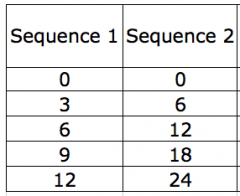
What can you observe about the relationship between corresponding numbers in each sequence, shown in the table? Why does this relationship occur?
|
Each number in sequence 2 is double the number in sequence 1.
|
|
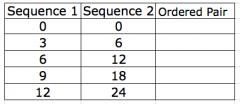
Complete the table by forming ordered pairs consisting of corresponding terms from each sequence.
|
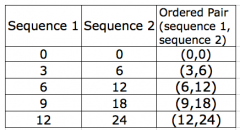
|
|
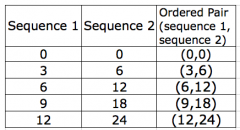
Graph the ordered pairs on the coordinate plane.
|
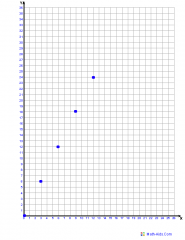
|
|
|
Find the first five terms in each sequence. Starting number: 0 Rule 1: Add 2 Rule 2: Add 6
|
Sequence 1: 0, 2, 4, 6, 8 Sequence 2: 0, 6, 12, 18, 24
|
|
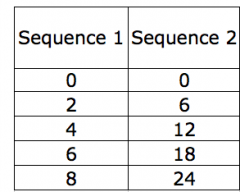
What can you observe about the relationship between corresponding numbers in each sequence, shown in the table? Why do you think this relationship occurs?
|
Each number in sequence 2 is three times the corresponding number in sequence 1. This relationship occurs because in the rules, the number you are adding for rule 2 is three times the number you are adding for rule 1.
|
|
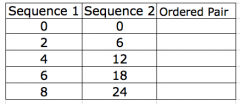
Complete the table by forming ordered pairs consisting of corresponding terms from each sequence.
|
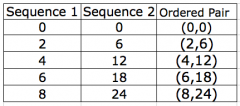
|
|

Graph the ordered pairs on the coordinate plane.
|
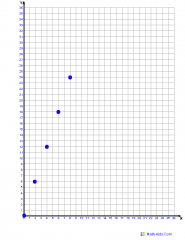
|

